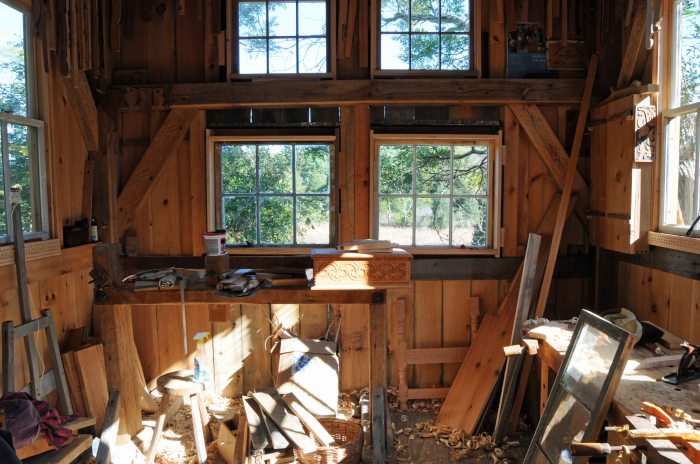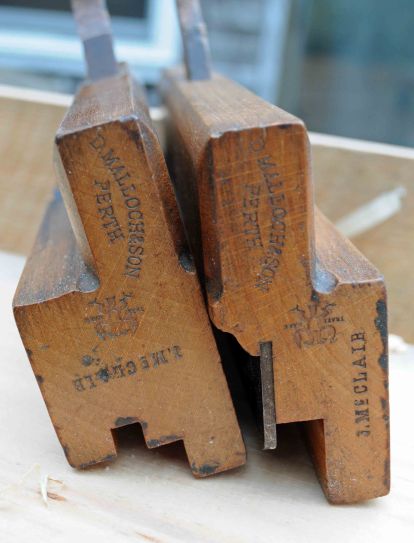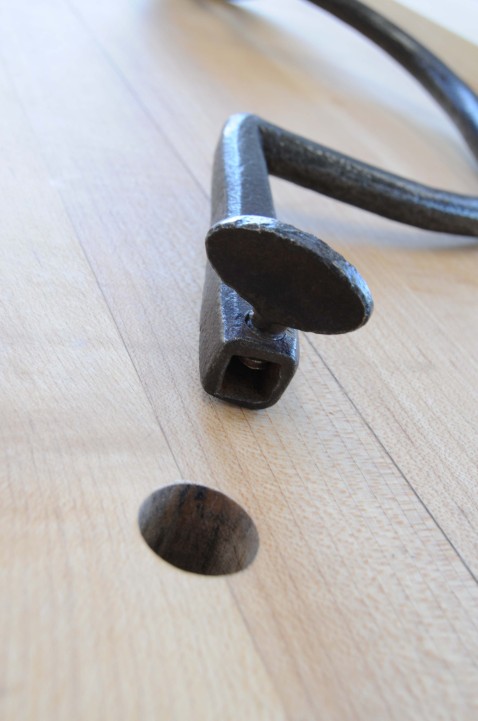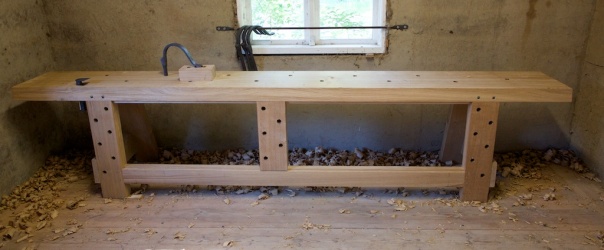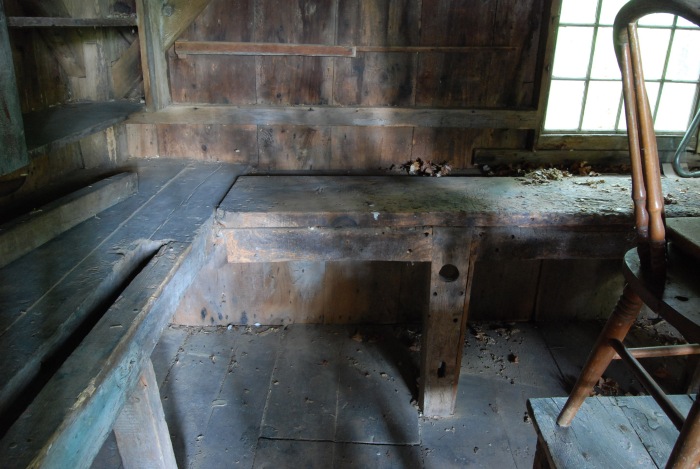
It’s coming on a whole year I’ve been building the workshop. I hope to finish just under that measure.
Lately it’s been windows – 15 windows in a building 12 feet by 16. It’s like I’m Tom Lie-Neilsen or something. They’re all in now, keeping out the dreadful wind and rain.
I’ve been making frames, (Justin Keegan made the first batch) fitting old sash to said frames, and trimming them inside & out. Work I know nothing about. Once I got going, I only had to re-do a small percentage of the work each day…Still more battens outside, some trim framing here & there inside. The battens need doing, the trim can wait til a bit later.
I did get to use planes a good bit, a relief from hammers, screwdrivers, etc. Reminded me of joinery.
With that many windows, there’s lots of light. Here’s an old box, fresh out of a 2-year stint in storage.
More pictures. The place is still a jumble, but each day it looks different. After this next photo, I cleaned it out. The floor is next, so I needed to get stuff out of there. Here, looking past the lathe, towards the river. In this photo, the lathe is just a place to pile junk.
Turning around, looking the other way, towards the door. Loft above. Main bench on our left.
more raking light.
begun hanging things here & there. Some will move when I find out they’re in the wrong spot.
As soon as the loft was done, it got filled. A couple of times. Here’s loft-left:

And loft-to-the-right:
There’s carvings scattered around the outside too. Mostly under the window frames, but the red-painted one got temporarily hung above where the door will go. When the door goes in, it will come down to get trimmed, then re-hung.
A recent one under one of the front windows.

Today I started working on the floor boards. Two layers of 7/8″ white pine. Insulation underneath. First, I’ve been cutting tongue-and-groove joints on the finish floor boards. Bought this really nice pair of planes from Patrick Leach. All I had to do was sharpen them.
A test-run.
The floor boards are 16′ long. Got to work both edges of 18 boards. I’ll walk some ways in this task, but what fun. The near end of the board sits in a notched stick held in the end vice. It works.



